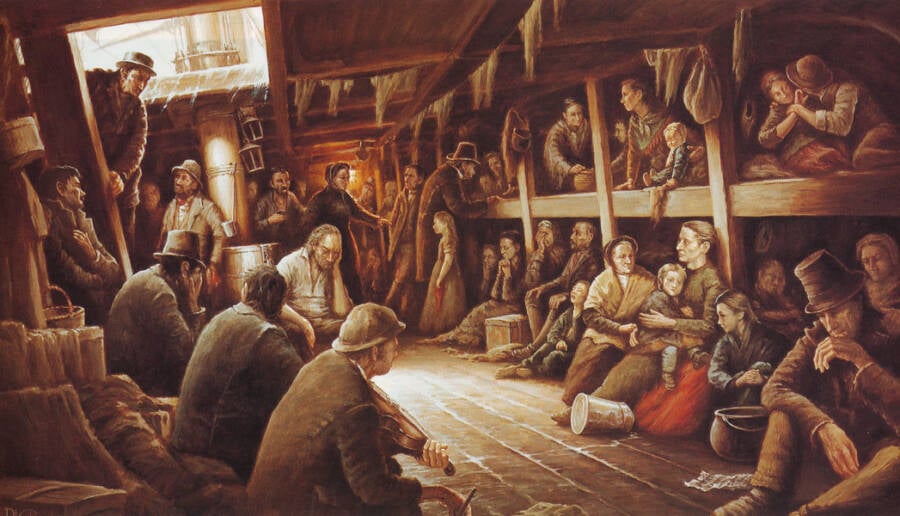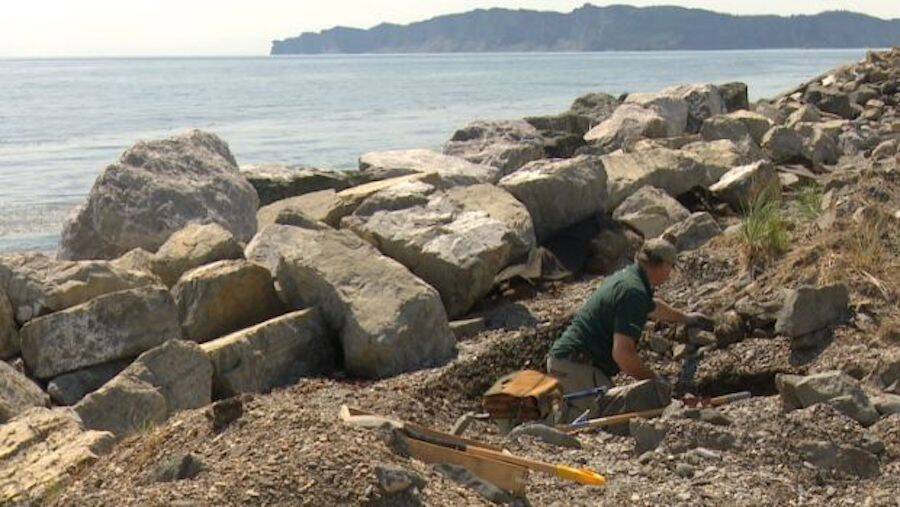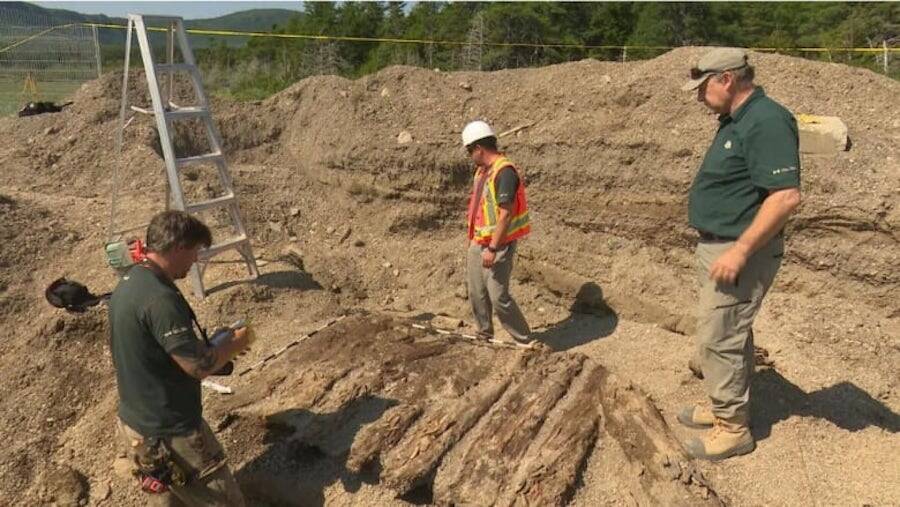They Fell Victim To The Irish Famine In 1847. More Than 150 Years Later, Their Remains Washed Ashore In Canada.

‘Below Deck’ by Rodney Charman depicts what life for emigrants at sea might’ve been like.
Following a storm in 2011, the bones of three children washed ashore Canada’s Cap-des-Rosiers beach. When the remains of 18 others, mostly from women and children, were discovered by archaeologists on the same beach in 2016, experts knew something important was afoot.
Three years later, researchers seem to have solved the mystery. According to the BBC, scientists believe this troubling skeletal evidence stems from the wreckage of the sunken Carricks ship in 1847.
The 19th century voyage originating from Ireland’s County Sligo carried starving families who were ejected from the Irish estates of Lord Palmerston. According to Irish Central, Palmerston’s agents “chartered the ill-equipped boat to get rid of them.”
The 21 sets of human remains found on this Quebec beach, in other words, belonged to a few hopeful and desperate Irish people seeking a more fruitful place to live.
The Great Famine, also known as the Great Hunger, caused mass starvation and disease. One million people died between 1845 and 1849 — while another million took their chances and fled.
Scientists used both laboratory analyses and considered the location of the bones to establish a connection to the Carricks ship. The vessel was carrying 180 emigrants bound for the Port of Quebec when it sank off Cap-des-Rosiers’ coast in the mid-18th century.
Historical accounts have shown that 87 bodies were recovered from the wreckage and buried on the beach. Only 48 people survived the accident. According to Yahoo News, the bones recovered in the last few years were sent to Parks Canada offices in Ottawa, and then to Montreal University for thorough analysis.
“This is like the end of the story for people who were interested in this,” said Mathieu Côté, a resource conservation manager at Forillon National Park. “We were suspicious of where [the remains] were from, and we had a good idea where they were from, but now we have evidence that those people were from Ireland.”
The porous bones spent 160 years adrift in saltwater — leaving them poorly preserved and making it difficult for scientists to analyze them.

The lab analyses confirmed the long-held theory that remains on Cap-des-Rosiers belonged to those who perished in the 1847 Carricks shipwreck.
“We did our best because the remains were very fragmentary,” said Isabelle Ribot, an associate professor of bioarchaeology at Montreal University. “They were extremely fragile.”
Though experts had a fairly confident suspicion that the location and condition of these bones pointed toward the Carricks shipwreck, it was the lab analysis that doubled down on that inkling. Scientists determined that the bones belonged to people who were malnourished and had a potato-heavy diet.
“Our skeletons reflect what we eat,” said Ribot, adding that scientists can find out whether someone had a protein-heavy or vegetable-centric diet from their bones alone.
Besides the fascinating historical import, this discovery carried with it a semblance of closure for those with direct ties to the late, resilient Irish aboard the Carricks. Canada’s National Revenue Minister Diane Lebouthillier said the find was “very significant for Irish families whose ancestors were Carricks passengers.”

The scientists found a diet low in protein and evidence of severe malnutrition in the recovered bones.
“During the Great Famine of Ireland in 1847, Canada became the home of many Irish immigrants,” said Lebouthillier.
“The tragic events of the Carricks shipwreck are a startling reminder of just how difficult the journey was for the travelers and that not everybody was lucky enough to reach their new home. The shipwreck reflects an important part of Canadian history.”
These latest human remains confirm the long-told legend of the Carricks shipwreck. More importantly, they’ve validated those clamoring for evidence since the 19th century.

The Irish Memorial on Cap-des-Rosiers was built in 1900 by St. Patrick’s Parish in Montreal to commemorate the shipwrecked passengers.
“Knowing the context and knowing there are descendants of the people who survived, it is very emotional and very sensitive,” she said. “We are very blessed to have been able to analyze them and extract as much information as we can.”
The remains will be buried near the Irish Memorial on Cap-des-Rosiers beach later this summer. The site was built in 1900 to commemorate the dead passengers of the Carricks, and is decorated with a ship’s bell found on Quebec’s shore 1968.
No comments: